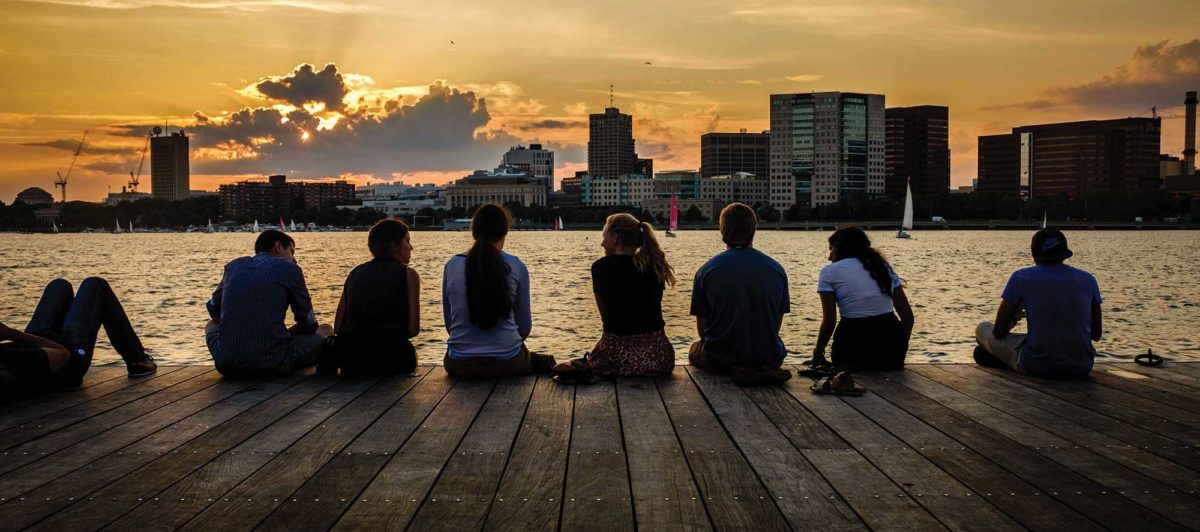
The Charles River is one of Boston's central recreational rivers, but has been flooded with toxic stormwater runoff emanating from large polluters for years. A recent court ruling may help change that. Photo: Paolo Braiuca
In the summer, Boston’s Charles River shimmers at the edge of the city. Joggers run along the Esplanade. Sailboats glide past Boston Community Boating. Fishers cast lines into the water while rowers, kayakers, and canoes skim across the river’s surface.
After moving to Boston in 2017, I joined the ranks of people recreating around the river. Most memorably: one spring afternoon, a friend invited me to race a sailboat. I agreed, though I hadn’t sailed much before. That day, the wind howled, and I capsized our boat three times. Unsurprisingly, we lost the race – and we also needed to be hosed down afterward to stave off infection from the pollutants in the river.
The Clean Water Act Offers a Solution
The Clean Water Act contains mechanisms to protect rivers like the Charles, Mystic, and Neponset from this type of pollution. The statute requires states to establish designated uses for different water bodies. For example, the Charles River is considered a “Class B” water body. This designation means that the river should be safe for swimming and fishing. Unfortunately, the Charles is not safe for swimming and fishing. Neither are two other Boston-area rivers: the Mystic and Neponset.
Because of their poor water quality, the Clean Water Act empowers the EPA to demand that impaired waters get stormwater permitting, limiting the amount of pollution that can enter the river. This power is called “Residual Designation Authority.” The permits issued under Residual Designation Authority would make the Charles safer and cleaner since commercial, industrial, and institutional facilities would no longer be able to pollute with abandon.
In 2019, CLF and the Charles River Watershed Association (CRWA) petitioned the EPA to use this power and require stormwater-limiting permits for private property owners surrounding the Charles, Mystic, and Neponset rivers.
Under the Clean Water Act, the EPA is required to respond to this petition within 90 days. But the EPA delayed action on the petition for three years. So, in July 2022, CLF let the EPA know that we would be taking the agency to court for its failure to respond.
That turned up the heat. In September 2022, the EPA agreed that polluters surrounding the Charles, Mystic, and Neponset rivers should be held to a higher standard through stormwater permitting.
This was a great development – we were one step closer to protecting these rivers. Until the EPA decided failed to follow through on its promised action.
CLF Takes EPA to Court
Once the EPA decided that impaired waters needed stormwater permits, it needed to draft them. These permits set precise limits on pollution that facilities are mandated to follow. If these limits are not followed, the EPA can require polluters to pay penalties and correct their behavior. So, the draft permits are an important step in protecting these three rivers, the recreation they support, and the wildlife that depends on the habitat.
The EPA then publishes those drafts for the public to review and comment on. This should happen relatively quickly. For example, just one day after the EPA decided that facilities surrounding the Rio Grande River in Los Alamos, New Mexico, needed to control pollution, draft permits were issued.
Here, the EPA never published the draft permits for the Charles, Mystic, and Neponset rivers. In fact, they took no action at all.
So, in November 2022, CLF followed through on its threat to sue the agency. Our lawsuit asked the judge to compel the EPA to publish these draft permits. The EPA filed a motion to dismiss, asking the judge to toss the case out of court. But CLF continued to fight.
A Step Toward Cleaning Up the Charles, Neponset, and Mystic Rivers
In July, CLF’s years of effort paid off. The judge rejected the EPA’s attempt to dismiss the lawsuit. The judge’s order paused the case until September 2024, giving the EPA 14 months to write and issue the permits.
These permits will help everyone, from boaters to joggers, who breathe in toxins in the water, more safely enjoy the Charles, Neponset, and Mystic rivers. They will also protect the rivers’ surrounding environments. During the summer months – when residents of all ages come to these rivers to cool off, enjoy time with friends and family, and witness natural beauty – protecting these waters takes on special importance. And in the future, hopefully, it won’t be necessary to hose off after capsizing into the Charles.



